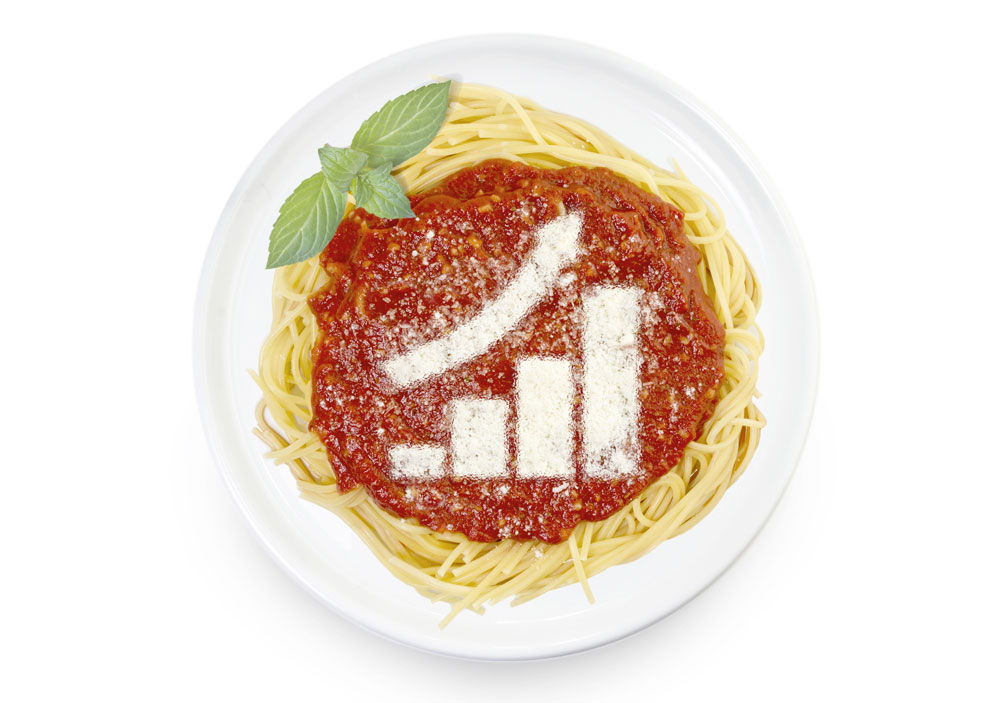
Background music at restaurants is not a new concept. For many years, small or large, restaurants have been using background music to provide an enjoyable dining experience to their customers. And the practice has become a staple within popular restaurants. Some restaurants stream various music playlists, whereas some tend to have limited offerings. However, many of them fail to do it correctly. Playing a varied music playlist doesn’t mean that it is done right. This article will help you fine-tune the music for your restaurant and explain how you can increase sales with the right music that matches your restaurant’s theme.
Why you should play music in your restaurant – benefits
The concept of your restaurant is what gives your restaurant its identity and uniqueness. For that reason, the restaurant background music should complement that concept. The music can be just as important as your staff, the decor, the atmosphere, or the food.
Researchers analyzed nearly two million transactions from 16 restaurants of known chain restaurants in 2016. The results indicate that restaurants with a carefully selected mix of music representing their culture can increase revenue by more than 9 percent. Another recent research shows that the right music can boost food and drink sales up to 40%. As you can see, the importance of music in restaurants is rising quickly and substantially.
In a separate survey, more than 2000 restaurant guests rated the impact on their experience of brand-specific music versus random after visiting a restaurant. According to the results, guests’ satisfaction and well-being increased when they listened to brand-fit music compared to random popular music. Furthermore, getting your brand’s music wrong or inappropriate can reduce overall sales by 4%, according to the industry blog FastCasual.com. Isn’t it incredible how much impact the music has on consumption? When choosing the background music for a restaurant, owners and general managers should not ignore these numbers.

How to increase sales
When you walk into a restaurant, you’re not just there to eat. You’re there for the ambiance, the atmosphere, the music, and the food. The branding and marketing strategies that high-end restaurants use affect how we consume food and make us repeatedly go back to their restaurants and restaurant background music. Let’s discuss these techniques, which will help you retain customers and increase sales.
Bonus Read: Does Music Increase Business Sales?
Music and Sense of Taste
Did you know that music can affect our sense of taste? Research suggests that sound has a significant impact on how we perceive flavors. For example, high-pitch sounds are associated with sweetness, whereas low-pitch sounds bring out a bitter taste.
Famous and high-end restaurants use this knowledge and create a playlist schedule that will impact food consumption – to their advantage.
Soft and melodic tunes have a calming effect on people, and when this type of genre is playing, people seem to be more relaxed and enjoy the food for longer and better. On the other hand, when loud and energetic music plays, it rushes people to eat quickly and with less taste.
To retain and bring more customers, you need to choose the music that complements both the atmosphere and the food.
Keep an eye on the volume
Always make sure to pay attention to the volume, no matter what kind of music your restaurant plays. In most restaurants, the noise level should not exceed 70 decibels (including ambient sound), while more vibrant bars can play the music that’s between 75 and 80 decibels comfortably. You want to choose a decibel level that is pleasant for your customers and employees. You can turn up the music in your restaurant if it serves late-night food or drinks (especially if it has a dance floor). Paying attention to how your guests interact with the music will help you to adjust the volume level when needed.
You should keep the background music in the background if you’re primarily a sit-down dinner type of restaurant. As mentioned above, studies have shown that guests cannot perceive sweetness and saltiness when the music is too loud and can have a negative impact on their experience.

Speed and tempo
The first question you should answer is, “Do I want to improve the table turnover rate, or do I want people to stay longer and spend more on high-priced items?”
If you prefer more people in and out quickly, you need to play faced-paced music at a louder volume, which is a proven table turnover trick. Studies show that people eat faster, drink more, and leave sooner. On the other hand, when classical music or soft instrumental music is played, dinners tend to order more on high-priced food and beverages, like a vintage bottle of wine. However, they also stay longer.
Determining what you want to achieve will help you reach your goal faster with the right speed and tempo music. Additionally, you may choose to use both techniques to achieve different purposes throughout the day.
The music should fit the time of the day
To summarise the previous two points, restaurants should use a slower tempo and lower volume background music to achieve higher sales through high-priced items. To maximize sales by improving the table turnover rate, slightly louder and faster tempo music is suggested.
Another critical aspect of the restaurant background music is matching the music with the time of the day. Playing energetic and high-tempo music during early hours for breakfast time may displease your customers.
For lunch rush and early afternoon, slightly energetic, fun, and light tunes in the restaurant background will most certainly please the crowd. Lunch hours, especially during the weekdays, are for business meetings or to catch up with friends. People need to have comfortable conversations during these times.
Play vibrant, instrumental music or indie selections that complement a fun, hip atmosphere during weekday evenings between 5:00 and 7:00 p.m.
After work, your restaurant will be more popular since people can come for a drink and take a break. At dinnertime, you can try to change the music to match the ambiance you want to achieve. Put yourself in the shoes of your customers and think about what you want to convey. Classic rock and jazz playlists are often the right choices. Playing upbeat music at your late-night restaurant will keep your customers entertained and encourage them to stay and spend more.
Avoid leaving it to your team
Restaurants are known to be busy at most times. Taking care of your customers and preparing high-quality food does not leave you or your team much time to create playlists.
Premade playlists are easy to use. You can even schedule the music ahead of time for the week and for different times of the day. It will allow your staff to focus on their jobs without worrying about what to play next and provide your customers with an excellent service.

Choose the best business music streaming provider
When you subscribe to Spotify or Pandora, you may think that you can use these services to stream music over the loudspeakers in your restaurant, aren’t you? Unfortunately, that’s not the case. All businesses, including restaurants, are required to stream music that is licensed for business use. Spotify, Pandora, or any other personal use music service will not cover your music licenses for commercial use.
Streaming copyrighted music in your restaurant without paying the necessary licensing fees could lead to severe fines and penalties.
SESAC, BMI, ASCAP, and GMR are the four Publishers Rights Organizations (PROs) in the United States. Each represents different artists and musical works, and you have to pay a fee to gain access to their music. Depending on the size of your venue and how frequently you play music, your licensing fee will differ and can be costly.
What is the simplest solution that is legal and doesn’t cost thousands of dollars in license fees? Jukeboxy.com!
- $24.99 / month
- 45+ million songs
- music licenses for business use included
- hundreds of curated playlists
- perfect for your restaurant
- try it today







